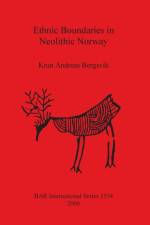av Knut Andreas Bergsvik
1 205
During the transition to the early Neolithic, a number of changes took place among the hunter-fishers of southern Norway. New resources were exploited, and some groups took up agriculture. Several new artefacts were invented and more lithic raw materials were quarried. People became increasingly sedentary and distinctive regional traditions developed. At the same time, long distance trade was initiated between these regions. The fact that the changes happened more or less simultaneously in many regions was probably not coincidental. They were, most likely, intimately linked to changes that also took place in the social lives of these people. One of the most important social changes may have been the development of more marked ethnic boundaries, which were related to increasing social inequality among the local groups. Such boundaries are important because they enable control of own populations and because they increase the social status for the ones who are able to cross them. In this study, the main theme is the investigation of whether such ethnic boundaries can be delineated. The author identifies them archaeologically, and discusses how and why they were established and maintained. Cultural differences are important resources for the establishment of ethnic differences. Consequently, it is of vital importance to investigate whether such differences can be traced in the archaeological data. This is done by recording as many early Neolithic cultural practices as possible and by subjecting them to a multivariate analysis. The author documents and quantifies site locations, raw materials, tool types and lithic reduction techniques to decide whether the distributions on these practices co-vary across space. The author also investigates whether there have been ruptures or major changes in communication. This is done by recording the distribution of the lithic raw materials with known sources. Although the development of more marked social boundaries probably took place throughout southern Norway, the main area of analysis in this volume only includes western Norway between Sunnmøre and Hordaland, and the mountain range between eastern and western Norway. Regions adjacent to this area are, however, drawn into the analysis and discussions. The most importantdata is from 37 excavated early Neolithic sites, which have been selected and re-analysed by means of a reference system for raw materials for the purpose of this study. Geological isotope analysis and mineralogical studies are important elements of the investigation of the lithic data. The study concentrates on the early Neolithic, which is approximately dated to between 5200 and 4700 BP in western Norway and 5100 and 4500 BP in eastern Norway. The late Mesolithic is, however, referred to both as a contrast to, and as a historical background for, the boundaries that emerged during the Neolithic.


